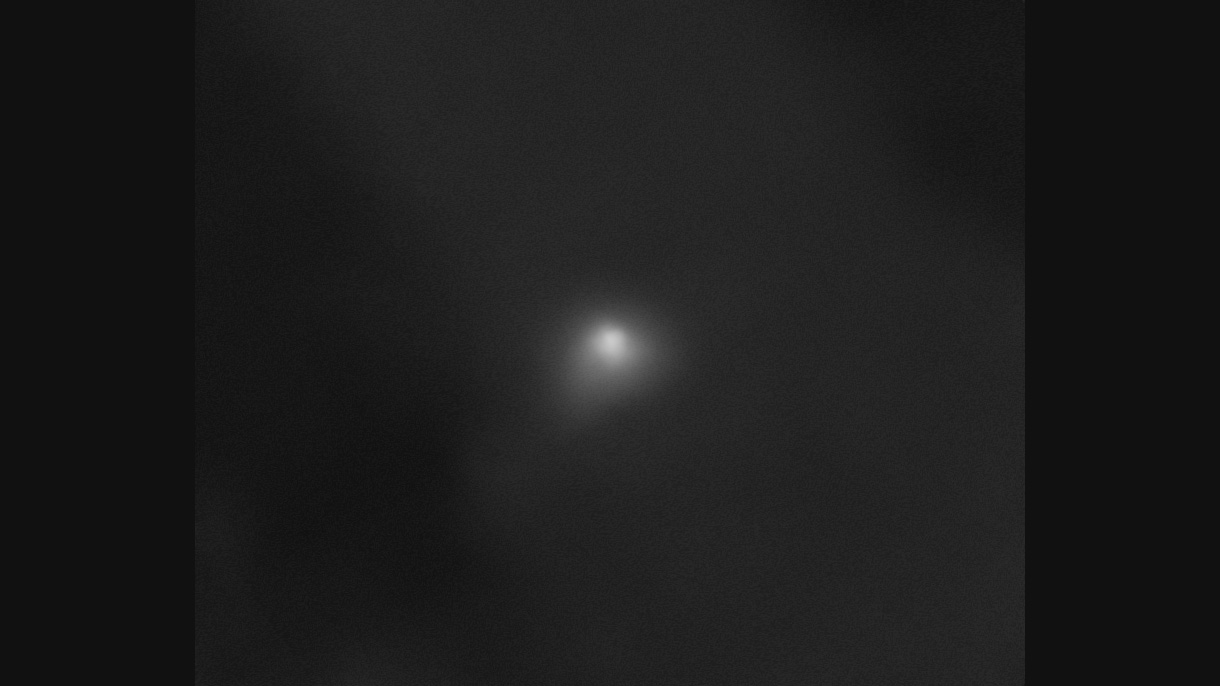
Now that the Cassini spacecraft’s journey has ended, scientists across the globe will be studying its rich science legacy for decades to come. After Cassini’s science-instrument teams have spent several months working out the final data products, all the observations and measurements are delivered to NASA’s Planetary Data System. There they become available to anyone in the world who may have an interest in studying them. As Cassini Project Scientist has commented on the Cassini website, “Who knows how many Ph.D.s theses are waiting to be written, based on the data returned in Cassini’s Grand Finale and final plunge into Saturn? Indeed, researchers may only have skimmed the surface of what Cassini’s data ultimately could reveal. Now the scientific deep dive begins."
Thursday March 29
The Cassini Project Scientist gave the invited Masursky Lecture at the 49th Lunar and Planetary Science Conference in The Woodlands, Texas. Entitled “Cassini’s Amazing Discoveries,” the talk focused on science discoveries from the entire mission including the Ring Grazing and Grand Finale orbits. The lecture is available online; it begins at about 12 minutes into this video: /news/13143/linda-spilker-cassinis-amazing-discoveries.
Monday April 2
An image of Saturn's active moon Enceladus was featured on the Cassini website today: /resources/17827/taking-a-shine-to-enceladus.
Also today, NASA's Astronomy Picture of the Day offers this image of the giant planet shaded by its vast rings: https://apod.nasa.gov/apod/ap180402.html.
Monday April 9
The European Geosciences Union began its four-day meeting at the convention center in Vienna, Austria. A special Cassini Union session was held on April 12 with a number of presentations on the Grand Finale and mission highlights. There were other Cassini talks as part of numerous outer-planet sessions throughout the week.
An image of Saturn's large icy moon Dione was the Cassini website selection for today: /resources/17828/dione-on-the-edge.
Saturday April 14
Today was the birthday of the 17th-century Dutch polymath Christiaan Huygens, who discovered Saturn's moon Titan. Named after him was the atmospheric probe, built by the European Space Agency and carried by the Cassini Spacecraft to investigate that planet-like moon.
Sunday April 15
The Cassini Radio and Plasma Wave Science instrument (RPWS) team met at the Musée des Abattoirs, the Museum of Modern and Contemporary Art in Toulouse, France.
Monday April 16
The Cassini Magnetospheric and Plasma Science (MAPS) Workshop, also in Toulouse, began today and ran through Wednesday. During the workshop, the latest results on all aspects of Saturn’s magnetospheric dynamics, including its interactions with the icy moons and the magnetosphere of Titan were discussed, as well as the closer-than-ever observations of the planet and its rings obtained during the Cassini Grand Finale.
The Cassini team was honored today as recipient of the 2018 John L. "Jack" Swigert Award for Space Exploration. At the Space Foundation's 34th Space Symposium in Colorado Springs, Colorado, JPL Director Michael Watkins, and Acting NASA Administrator Robert Lightfoot, were present to accept the award from Space Foundation CEO Thomas Zelibor. Here is an image from that meeting: /news/13145/acting-administrator-lightfoot-accepts-swigert-award-on-behalf-of-cassini-mission.
Wednesday April 18
The Cassini project scientist presented a public lecture entitled “Surprises in the Saturn System: Cassini Mission Highlights" at the Cité de l'Espace, in Toulouse.
Thursday April 19
In the U.S. Senate today, Representative Jim Bridenstein was confirmed as NASA's 13th administrator.
Meanwhile in Toulouse, the Cassini Magnetospheric Imaging Instrument (MIMI) team met to discuss their recent science results.
Monday April 23
The Cassini Project Scientist gave a talk on Cassini mission highlights to about 900 young science fair participants visiting the California Science Center in Los Angeles. There were attendees from some 400 schools throughout the state.
An image of part of Saturn's sweeping ring system was featured today: /resources/17829/gravitys-rainbow.
Tuesday April 24
Cassini spacecraft engineers presented papers at two different conferences held this week. The 2018 IEEE International Vacuum Electronics Conference (IVEC) in Monterrey, California included "The Flight Operations History of the Cassini X-Band Traveling Wave Tube Amplifiers (TWTAs)," and the 36th annual Space Power Workshop in Los Angeles included "Cassini Spacecraft Radioisotope Thermoelectric Generators (RTG) Power and Thermal Analysis During the 20 Year Mission."
Featured as NASA's "Astronomy Picture of the Day" today is a fanciful creation that renders ring-brightness into musical notes: https://apod.nasa.gov/apod/ap180424.html.


































